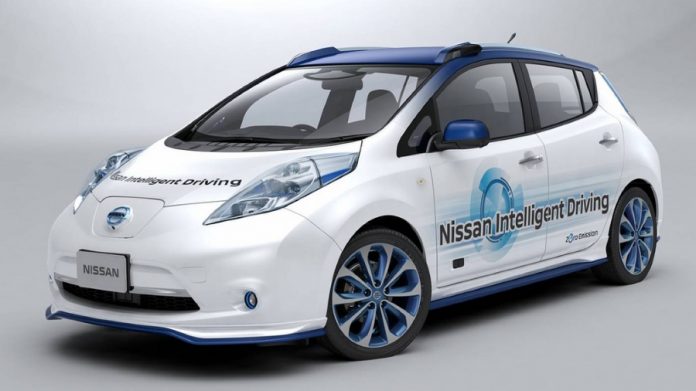Companies and self-driving cars have been in the news lately, as various companies test the technology using Artificial Intelligence (AI) to manage information, and continue to review existing regulations for drivers and driving, pressing legislators to add new rules, both for driving and for safety.
Nissan unveiled a driver supervised prototype, seen at the Tokyo Motor Show, which they plan to roll out by 2020 and be fully operational by 2022.
The car is driving in Tokyo and has been tested in London and Silicon Valley, California.
The car has 9 radar sensors, 6 laser scanners, 12 sonar sensors and 12 cameras, all providing inputs to the car’s AI.
Compare this to the 2017 Rogue, which has only sonar for self-park and one forward-facing camera, and has no lasers.
Nissan plans to have the vehicle fully autonomous for highway and urban settings.
Nissan has Pro-Pilot in its 2017 Serena, a mini-van with enhanced cruise control. Pro-Pilot allows the vehicle to maintain a set distance from the vehicle in front, and also to stay in its lane.
Pro-Pilot is expected in the 2018 Rogue in the U.S. and the 2018 electric Leaf by the first quarter.
The next generation of Pro-Pilot is planned to manage multiple lanes.
Nissan also unveiled a new concept car at the Tokyo Motor Show, the IMx.
In addition to the AI for driving, it has an enhanced windshield for navigation and pedestrian detection, which directs information to the driver, in a form of “heads-up” display.
Other manufacturers, such as BMW and Jaguar Land Rover are using voice-activated AI for media management, navigation aids, and climate control, however, have not begun using AI for driving as of yet.
Challenges facing this self-driving technology include regulatory, as a driver must be in control of the car in most countries to operate. U.S. states have different regulations and a federal standard has not been applied.
Canada has only recently begun allowing testing of self-driving technology, whereas other countries, such as U.S. and Japan, have been testing for some time.
Another major challenge noted by Takao Asami, senior vice-president of research and advanced engineering for Nissan, is the need for 100% wireless connectivity to the city’s infrastructure for AI to work.
This may be via satellite, existing 4G cellular, or the upcoming 5G standard (2020), however, without it, the car’s AI is limited. “We need 100-percent connectivity – it’s mandatory,” Asami said. “But we don’t have a universal answer to that.”
Source The Globe & Mail
